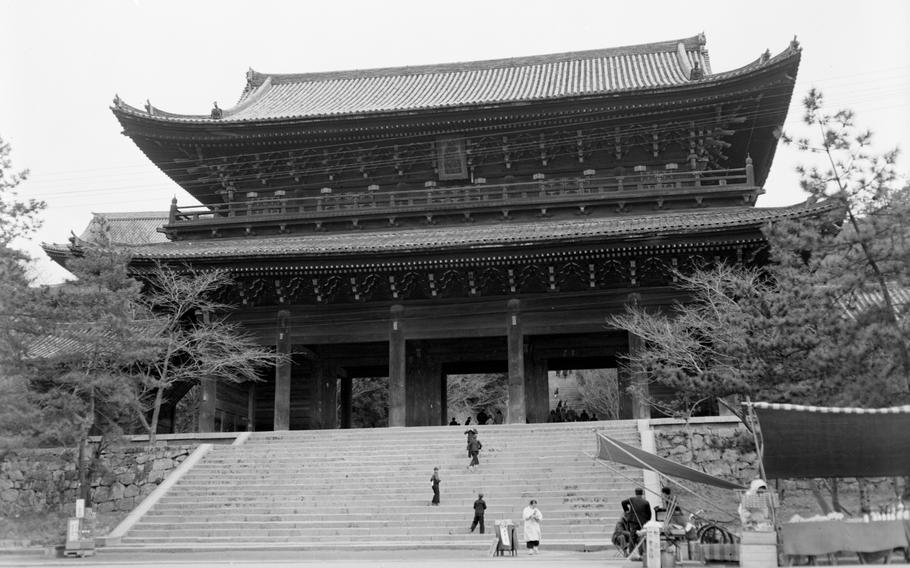
The Sanmon Gate at the Chion-in temple complex in Kyoto, as it was in March 1955. The 16th century gate measures over 78 feet and was photographed by Stars and Stripes photographer Neil E. Callahan. Callahan shot several street scenes and buildings in and around Kyoto. Seven of these negatives survived and were found in Stars and Stripes’ archives in 2024 and subsequently digitized. (Neal E. Callahan/Stars and Stripes)
This article first appeared in the Stars and Stripes Pacific edition, March 11, 1955. It is republished unedited in its original form.
KYOTO — Kyoto — the city of peace — is a haven for tourists and a paradise for photographers.
The capital of Japan from 794 A.D. to 1868, Kyoto is dotted with 1,400 temples and shrines — almost a third of those in the entire nation.
Mountains ring it on three sides and the legendary Kamo river provides its fourth boundary.
The city is only eight hours from Tokyo by rain and is easily reached by other Japan-stationed and R&R personnel.
In the heart of the city is the Rakuyo Hotel, a special services accommodation for enlisted men. The hotel offers sightseeing trips through the shrine-studded city.
Six miles outside of Kyoto is a special services hotel for officers — the Biwako.
In addition to the shrines, the city’s handicraft industry and ancient civic sites provide photogenic tourists attractions.
Silk has been Kyoto’s major industry since the founding of the city. Its history parallels that of Japan itself.
The dyeing of silks here is considered unparalleled throughout the world. The characteristic Kyoto manner of printing designs on silk was invented in the late 17th century by a local priest.
Other industries include embroidery, porcelain ware, and dying.

View of Kyoto and Lake Biwa from Mount Hiei in March 1955. (Neal E. Callahan/Stars and Stripes)
Musts on any tour are the old Imperial Palace, the many ancient shrines, and the Temple which houses 1,000 five-foot statues of the goddesses of mercy Kannon.
Touring is easy because of the geometric pattern of the streets.
Outside the city are Lake Biwa, largest in Japan, and Hozu rapids, where tourists can pay 500 for an 8-mile boat trip climaxed by a thrilling shooting of the rapids.